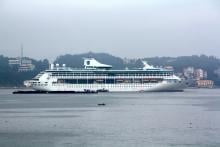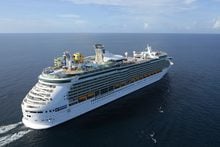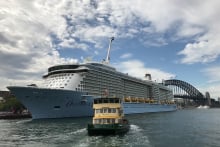One of the major reasons to go on a cruise is your cruise ship brings you to a few ports of call in many different countries to visit. Royal Caribbean ships visit ports of call on continents around the world and it can be a very exciting experience. Getting off your cruise ship to visit a port is as much a part of your cruise as the onboard entertainment or the food served daily on your ship. Here are some guidelines for successful port touring.
Research your ports in advance
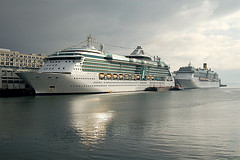 Before you ever set foot on your cruise ship, you should read about the ports of call you will be visiting and do some research into the port itself as well as what you're interested in doing. You don't want to be that family that gets off the ship and has the argument about what to do. Each port you visit has different options and it's hard to generalize any of them. There are ports that have a lot of beaches, some that are urban and others that are a mix of the two. It's your job to learn more about them before you get there.
Before you ever set foot on your cruise ship, you should read about the ports of call you will be visiting and do some research into the port itself as well as what you're interested in doing. You don't want to be that family that gets off the ship and has the argument about what to do. Each port you visit has different options and it's hard to generalize any of them. There are ports that have a lot of beaches, some that are urban and others that are a mix of the two. It's your job to learn more about them before you get there.
You will want to first learn about the port you're visiting. Before you know what you're going to do, you're going to need to know what the port is best known for. Think of it like going to a steak house restaurant and ordering the salad. Sure, you can do that but if you're going to a steak house, you should probably stick with what they are best known for...steaks! So if a port is best known for its beaches, you may want to focus on that. Likewise, if a port is known for its shopping or cultural heritage, you'd be best served sticking with that. It isn't to say you couldn't have a good time going shopping on an island best known for its beaches, but it's just a best practice.
Getting off the ship
Each ship disembarks differently, but you will go to the assigned deck that the gangway is located on (usually a low deck, like deck 2). Once at the gangway, generally speaking you will need your SeaPass card and it's smart to also bring photo identification. There are differing opinions on this, but I personally recommend bringing your passport with you to any port you visit. The reason for this recommendation is simple: if for some reason you get stuck on the island and miss the cruise ship, without a passport, it will be quite difficult to get back to your home country. However, if you have a passport, all you need is to buy transportation back home and your passport will easily get you back.
When disembarking on Royal Caribbean, you will swipe your SeaPass card at a kiosk where a Royal Caribbean crew member will confirm your identity. Think of this like checking out a book at the library, only this time, you're checking yourself out of the ship. Make a note of what time you need to return to the ship by (and ensure you are back well before that time).
Getting to port
There are two ways to get to the port and they are by a dock or by tenders. A dock is simple enough, the ship docks and you walk off the gangway to a dock and you walk right into the port. If your ship uses a tender, you will board small boats that will ferry you to the dock.
Docking is ideal because it makes for the easiest and most convenient means of getting to and from the ship. Tenders are slower and will require more time to fully load and unload each time and there is usually a good amount of waiting, especially during peak times.
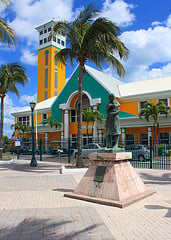 Navigating around the port
Navigating around the port
Each port is different and offers different amenities to get you where you're going. If you have an excursion booked, often you will meet in a pre-arranged area near the port dock and there's usually a lot of signs to indicate where and when to meet. If you're doing something by yourself, some ports allow easy walking access to the area, while others may require taxis or rental cars to get around.
Having your research done in advance will assist in making the transition from ship to port as seamless as possible, as locals in many of the ports can be pushy with offering their services. Be sure to know what you want to do in advance so there's no confusion about what to do.
The people: Good and bad
One last word about the ports and that's the people you will encounter a wide variety of locals in each port you visit. Some are pushy and some aren't. When we say "pushy", we mean there are varying degrees of sales pitches to you for their goods or services. Most often, a simple "no thank you" will suffice in ending their conversation, but some ports do have locals that will spend more time trying to convince you to spend your money. It's hard to generalize about any port or people, so do your research to know if the port you are visiting will have locals that can be more aggressive than others.


